Previous Posts: 70-66, 71-75, 76-80, 81-85, 86-90, 91-95, 96-100
65) Harry Bartell
Harry Bartell is another one of those amazing character actors. His winning personality made him the perfect genial spokesmen for Petri Wines on the New Adventures of Sherlock Holmes and the Casebook of Gregory Hood. On the New Adventures of Sherlock Holmes, in particular, he achieved a great level of chemistry with co-star Nigel Bruce making the commercials and intros worth listening to. He also was the longest serving of the six Archie Goodwins on the New Adventures of Nero Wolfe with Sidney Greenstreet. He was the green Young Lieutenant Lieutenant Siberts on Fort Laramie. He was Captain Merriweather Lewis in NPR’s Horizons West. However, beyond his known roles, Bartell was a true character with more than 10,000 radio appearances. Many of these appearances were on some radio’s most well known programs. The Digital Deli gives the tale of the tape:
* 180+ appearances in Gunsmoke
* 60+ appearances in Escape
* 15+ appearances in Advs. of Philip Marlowe
* 30+ appearances in Dragnet
* 20+ appearances in Let George Do It
* 45+ appearances in Suspense
* 96+ appearances in Johnny Dollar
* 60+ appearances in Have Gun, Will Travel
With so many vital roles in great radio franchises, Bartell was truly essential. Further, he remained an active ambassador for the godlen age of radio, appearing at OTR conventions, and even appeared in some new radio dramas with Jim French’s productions in Seattle.
64) Cathy Lewis-Cathy Lewis was another well-used radio character actresses. She had recurring roles on programs like Michael Shayne Private Detective with Wally Maher, My Friend Irma, and The Great Gildersleeve. Perhaps, her most well-known program was the series On Stage in which she starred with her then-husband Elliot. She was invaluable as a character actress, making numerous appearance on anthology programs like Suspense, Romance, and The Whistler. With more than 3000 appearances, Cathy Lewis’ place as one of radio’s most important women is well-earned.
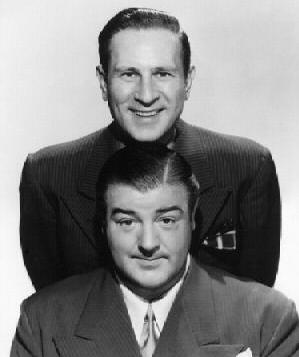 63) Abbott and Costello-Abbott and Costello’s style of comedy left an indellible mark on radio. They began their radio career in the early 40s, becoming regulars on the Charlie McCarthy show before landing their own show for Camel in 1942. However, their career on the radio was interrupted when Lou Costello was hit with rheumatic fever and forced into nine months of bed rest. Then on the day Costello was to return to radio, his infant son Lou Jr. drowned in a swimming pool two hours after Costello had been playing with him. Costello had promised Lou, Jr. that he would hear him on the radio. Jimmy Durante among others offered to fill in for Costello, but Costello insisted on going on, writing later, “I wanted to do that show so that my voice would go on the air with the hope that Lou Jr. might hear it wherever he was.” Abbott and Costello would star in the Camel Program on NBC until 1947 when would jump to ABC for their final two seasons. During their ABC run, the duo also hosted the Abbott and Costello Kids Show which served as an outgrowth of the Lou Costello Jr. Youth Foundation which sought to honor good citizenship among kids . In addition, with the heyday of the hard boiled private eye, Costello introduced his own parody in the form of the Sam Shovel sketches.
63) Abbott and Costello-Abbott and Costello’s style of comedy left an indellible mark on radio. They began their radio career in the early 40s, becoming regulars on the Charlie McCarthy show before landing their own show for Camel in 1942. However, their career on the radio was interrupted when Lou Costello was hit with rheumatic fever and forced into nine months of bed rest. Then on the day Costello was to return to radio, his infant son Lou Jr. drowned in a swimming pool two hours after Costello had been playing with him. Costello had promised Lou, Jr. that he would hear him on the radio. Jimmy Durante among others offered to fill in for Costello, but Costello insisted on going on, writing later, “I wanted to do that show so that my voice would go on the air with the hope that Lou Jr. might hear it wherever he was.” Abbott and Costello would star in the Camel Program on NBC until 1947 when would jump to ABC for their final two seasons. During their ABC run, the duo also hosted the Abbott and Costello Kids Show which served as an outgrowth of the Lou Costello Jr. Youth Foundation which sought to honor good citizenship among kids . In addition, with the heyday of the hard boiled private eye, Costello introduced his own parody in the form of the Sam Shovel sketches.
With limited opportunities for physical comedy, Abbott and Costello weren’t as good over radio as they were in visual mediums, but they were good enough so that fans still crave their radio antics as part of the legacy of these comedy legends who enjoyed success in Vaudeville, Radio, Movies, and Television, making them perhaps the greatest comedy team of all time.
62) Rudy Vallee
Vallee was the first of the great crooners, setting the table for those who would follow such as Bing Crosby and Frank Sinatra. He was the leader of his own orchestra, the Connecticut Yankees. He was also a radio pioneer as one of the first variety show hosts with the Fleischmann Yeast Hour in 1928. Vallee would host similar variety programs for more than 20 years and give radio listeners an early look at such stars as Kate Smith and Burns and Allen.
61) Don Ameche
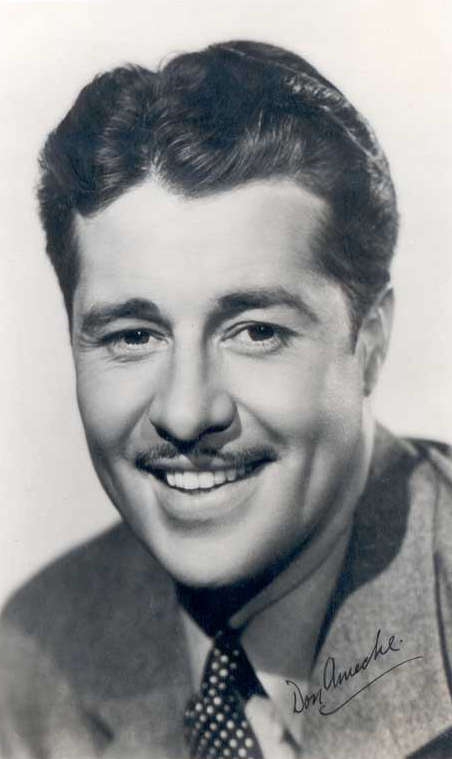 Ameche’s radio career was one of many highlights. He became a regular star on the Chicago based soap Betty and Bob in the early 1930s, one of radio’s earliest soap operas. He also served as the long time host of the Chase and Sanborn Hour which featured Edgar Bergen and Charlie McCarthy. He played the role of John Bickerson the male half of radio’s constantly fighting couple, and perhaps paradoxically played the lead in the first episode of The Family Theater. In addition, Amerche also served as the announcer on the Jimmy Durante Show in its final days. Based on his numerous achievements, he was inducted into the Radio Hall of Fame in 1992.
Ameche’s radio career was one of many highlights. He became a regular star on the Chicago based soap Betty and Bob in the early 1930s, one of radio’s earliest soap operas. He also served as the long time host of the Chase and Sanborn Hour which featured Edgar Bergen and Charlie McCarthy. He played the role of John Bickerson the male half of radio’s constantly fighting couple, and perhaps paradoxically played the lead in the first episode of The Family Theater. In addition, Amerche also served as the announcer on the Jimmy Durante Show in its final days. Based on his numerous achievements, he was inducted into the Radio Hall of Fame in 1992.
If you enjoyed this post, you can have new posts about Detective stories and the golden age of radio and television delivered automatically to your Kindle.
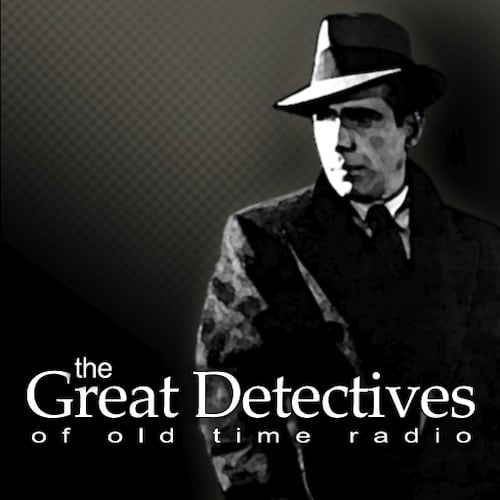
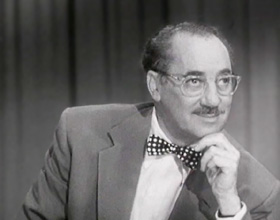 Groucho Marx’s greatest claim to fame was as the ringleader of the Marx Brothers. In his zany character, he has delighted millions. His radio story was more complex. In the early ’30s, he and Chico starred in Five Star Theater as two characters right out of their films. Though all but one episode and two excerpts have been lost, the series was recreated brilliantly by the BBC as
Groucho Marx’s greatest claim to fame was as the ringleader of the Marx Brothers. In his zany character, he has delighted millions. His radio story was more complex. In the early ’30s, he and Chico starred in Five Star Theater as two characters right out of their films. Though all but one episode and two excerpts have been lost, the series was recreated brilliantly by the BBC as 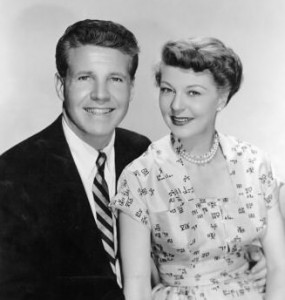 Ozzie and Harriet would define an era in American life and they began over radio. Ozzie Nelson was a band leader for Red Skelton and his wife Harriet was a single. When Skelton was drafted, the couple got their own program, the Adventures of Ozzie and Harriet. The program would be a sensation. It would be emblematic of everything right or everything wrong with traditional values depending on your viewpoint. The series began over radio and continued on television until 1966, some 22 years after it started. The talented couple also lent their combined efforts to programs like Suspense and Family Theater, providing an interesting contrast to their work on Ozzie and Harriet.
Ozzie and Harriet would define an era in American life and they began over radio. Ozzie Nelson was a band leader for Red Skelton and his wife Harriet was a single. When Skelton was drafted, the couple got their own program, the Adventures of Ozzie and Harriet. The program would be a sensation. It would be emblematic of everything right or everything wrong with traditional values depending on your viewpoint. The series began over radio and continued on television until 1966, some 22 years after it started. The talented couple also lent their combined efforts to programs like Suspense and Family Theater, providing an interesting contrast to their work on Ozzie and Harriet.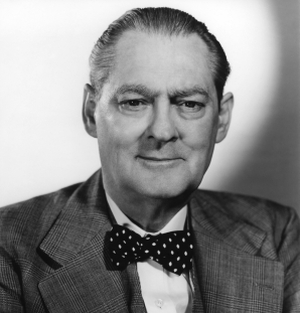 74) Lionel Barrymore
74) Lionel Barrymore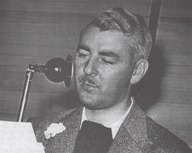 72) William Johnstone
72) William Johnstone Few men landed on as many detective shows as Les Damon. He was Nick Charles in the
Few men landed on as many detective shows as Les Damon. He was Nick Charles in the 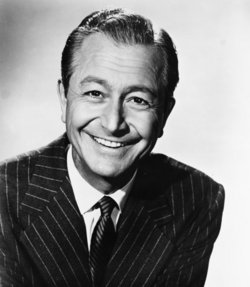 Robert Young was best known as Jim Anderson on Father Knows Best which got its iconic start over radio in 1949. However, he was far more than that. As a film actor, he appeared in 100 films. Over radio, he took on countless roles in a variety of genres. He appeared frequently on the Lux Radio Theater. He was a host of Maxwell House’s popular variety show The Good News of 1939. He appeared on Suspense and of course, The Family Theatre. Young also hosted two radio dramas for the Episcopal Church in the late 1950s and early 1960s called The Witness and The Search. Throughout his career, he remained one of America’s best loved entertainer and his long radio resume reflects that.
Robert Young was best known as Jim Anderson on Father Knows Best which got its iconic start over radio in 1949. However, he was far more than that. As a film actor, he appeared in 100 films. Over radio, he took on countless roles in a variety of genres. He appeared frequently on the Lux Radio Theater. He was a host of Maxwell House’s popular variety show The Good News of 1939. He appeared on Suspense and of course, The Family Theatre. Young also hosted two radio dramas for the Episcopal Church in the late 1950s and early 1960s called The Witness and The Search. Throughout his career, he remained one of America’s best loved entertainer and his long radio resume reflects that.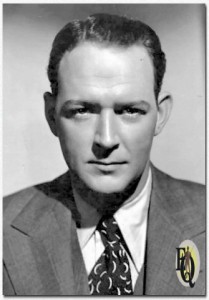 84) William Gargan
84) William Gargan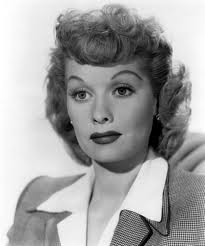 81) Lucille Ball
81) Lucille Ball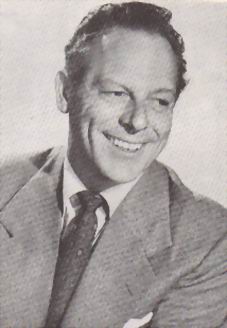 89) Bill Goodwin: To most people, commercials are merely interuptions in their entertainment. However, Bill Goodwin was the master of making commercials entertaining. Working as an announcer for Bob Hope and later for George Burns and Gracie Allen, Goodwin made the commercial breaks entertaining and laugh out loud hilarious as he inserted ads for Swan Soap or Maxwell House Coffee into the plot of the story with comedic brilliance. In addition to his announcing gigs, Goodwin was a reliable comedic actor, often appearing on Screen Guild Theatre and Lux Radio Theater.
89) Bill Goodwin: To most people, commercials are merely interuptions in their entertainment. However, Bill Goodwin was the master of making commercials entertaining. Working as an announcer for Bob Hope and later for George Burns and Gracie Allen, Goodwin made the commercial breaks entertaining and laugh out loud hilarious as he inserted ads for Swan Soap or Maxwell House Coffee into the plot of the story with comedic brilliance. In addition to his announcing gigs, Goodwin was a reliable comedic actor, often appearing on Screen Guild Theatre and Lux Radio Theater.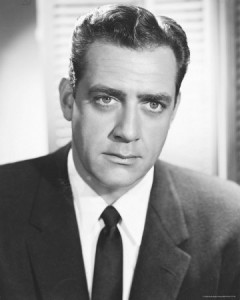 Raymond Burr would find stardom in television as Perry Mason. His radio career began a decade before. Burr was a character actor for most of his radio career, playing roles similar to those taken by William Conrad with many heavies and cops, although Burr was not nearly as prolific. Burr provided support for programs like Suspense, The Line-Up, and Yours Truly Johnny Dollar. In addition, he worked himself into two recurring roles in crime dramas featuring Jack Webb. He was radio’s most brutal cop, Inspector Hellman of San Francisco Homicide on
Raymond Burr would find stardom in television as Perry Mason. His radio career began a decade before. Burr was a character actor for most of his radio career, playing roles similar to those taken by William Conrad with many heavies and cops, although Burr was not nearly as prolific. Burr provided support for programs like Suspense, The Line-Up, and Yours Truly Johnny Dollar. In addition, he worked himself into two recurring roles in crime dramas featuring Jack Webb. He was radio’s most brutal cop, Inspector Hellman of San Francisco Homicide on 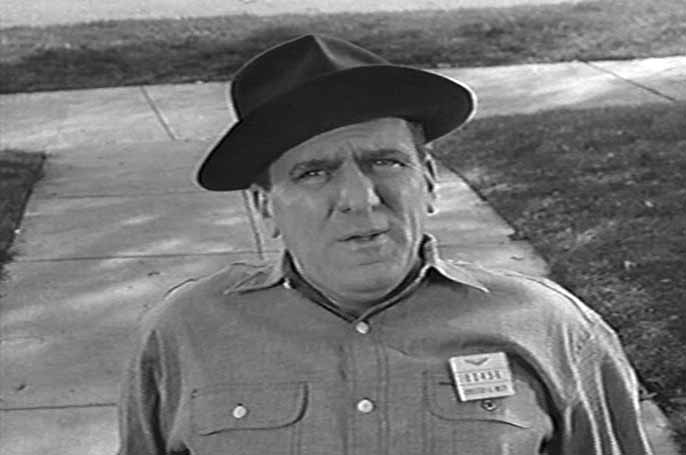
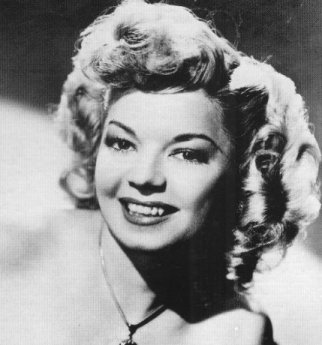 Frances Langford had a long association with radio that began in the mid-1930s and lasted for more than a decade and a half. She appeared on musical programs with Rudy Vallee and Dick Powell, but she was best known for her association with Bob Hope. During World War II, she toured with Hope overseas. She also played Blanche on the iconic radio sitcom, The Bickersons.
Frances Langford had a long association with radio that began in the mid-1930s and lasted for more than a decade and a half. She appeared on musical programs with Rudy Vallee and Dick Powell, but she was best known for her association with Bob Hope. During World War II, she toured with Hope overseas. She also played Blanche on the iconic radio sitcom, The Bickersons.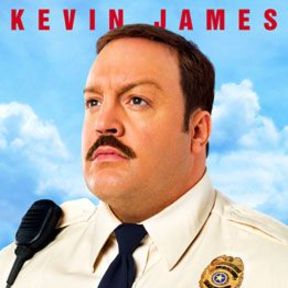
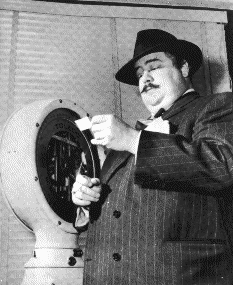 Brad Runyon had little in common with Gutman because not only wasn’t he a villain, but unlike Gutman, Runyon was a man of action. This also separated him from Nero Wolfe, who relied on others to do his legwork. Runyon, however was solidly in the hard-boiled school of private detection, taking and giving his own lumps. Runyon was tough, intelligent, and attractive to the ladies despite his girth, but also was a little sensitive about the subject. At the end of an episode he bemoaned, “Nobody loves a Fat Man.” Radio audiences begged to differ.
Brad Runyon had little in common with Gutman because not only wasn’t he a villain, but unlike Gutman, Runyon was a man of action. This also separated him from Nero Wolfe, who relied on others to do his legwork. Runyon, however was solidly in the hard-boiled school of private detection, taking and giving his own lumps. Runyon was tough, intelligent, and attractive to the ladies despite his girth, but also was a little sensitive about the subject. At the end of an episode he bemoaned, “Nobody loves a Fat Man.” Radio audiences begged to differ.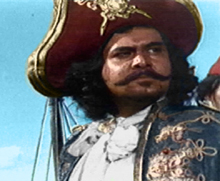
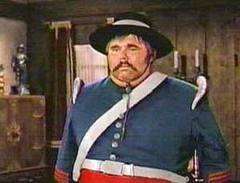 However, the Fat Man wasn’t the only large radio detective. In 1950, NBC brought the Big Guy to radio. In the lead was Henry Calvin who definitely had the build for the part. In the latter half of the 1950s, he would play his most memorable role as Sergeant Garcia on Disney’s Zorro and in the 1960s would appear in a variety episode of the Dick Van Dyke Show as Oliver Hardy with Van Dyke as Stan Laurel.
However, the Fat Man wasn’t the only large radio detective. In 1950, NBC brought the Big Guy to radio. In the lead was Henry Calvin who definitely had the build for the part. In the latter half of the 1950s, he would play his most memorable role as Sergeant Garcia on Disney’s Zorro and in the 1960s would appear in a variety episode of the Dick Van Dyke Show as Oliver Hardy with Van Dyke as Stan Laurel.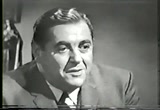 However, there the similarities end. We find that Lucius Crane investigates his own cases with only a little help from the sidekick. The mystery is well-written. Middleton does fairly well as Crane. There was a little stiffness early on, but this was not unlike trying on and getting comfortable in a new set of clothes. Overall, the show worked quite well and could have been an interesting program.
However, there the similarities end. We find that Lucius Crane investigates his own cases with only a little help from the sidekick. The mystery is well-written. Middleton does fairly well as Crane. There was a little stiffness early on, but this was not unlike trying on and getting comfortable in a new set of clothes. Overall, the show worked quite well and could have been an interesting program.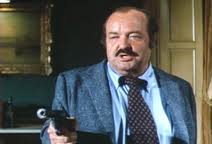 Sixteen years after Gunsmoke came to television, he got a crack at a starring dramatic role as the title character in Cannon. Frank Cannon was an ex-cop who was a private detective and freelance troubleshooter. Cannon was a gourmet chef, but also a martial arts and weapons expert who could more than hold his own in a fight and was a great driver when a chase scene was called for.
Sixteen years after Gunsmoke came to television, he got a crack at a starring dramatic role as the title character in Cannon. Frank Cannon was an ex-cop who was a private detective and freelance troubleshooter. Cannon was a gourmet chef, but also a martial arts and weapons expert who could more than hold his own in a fight and was a great driver when a chase scene was called for.